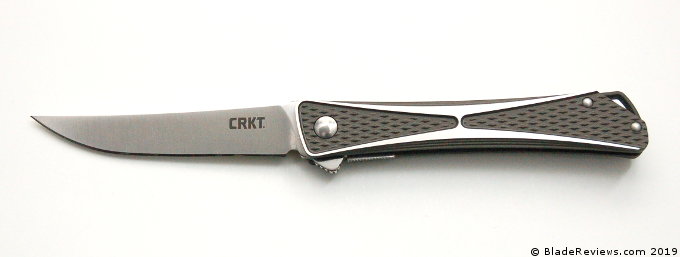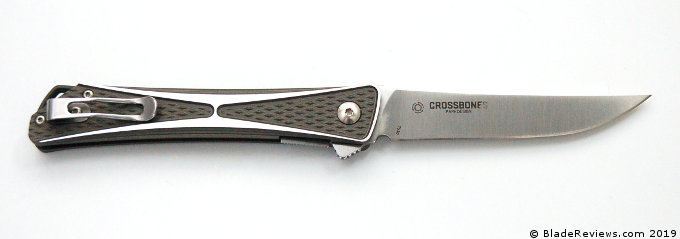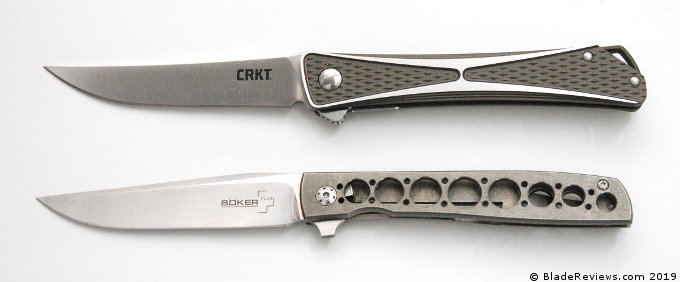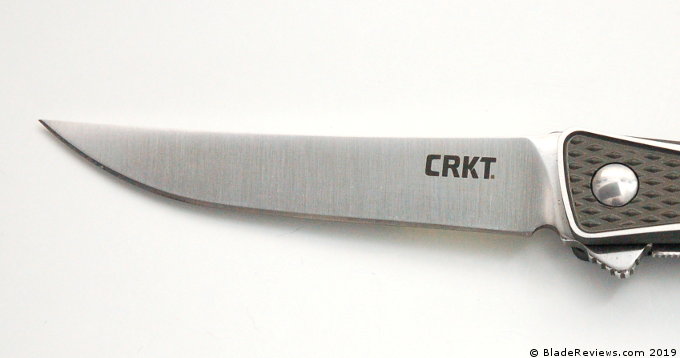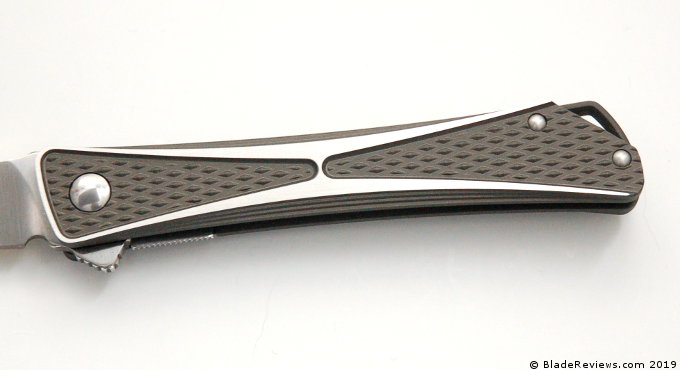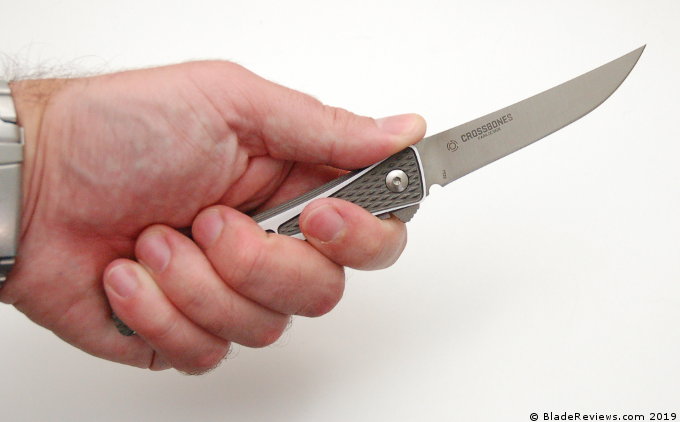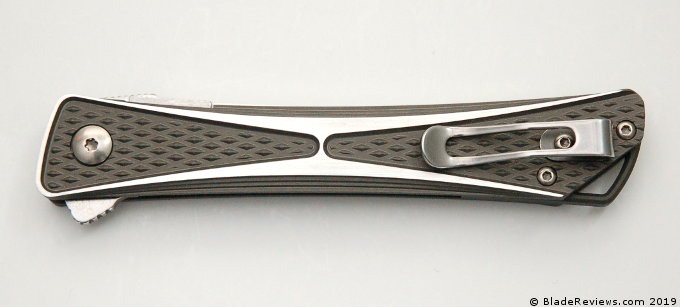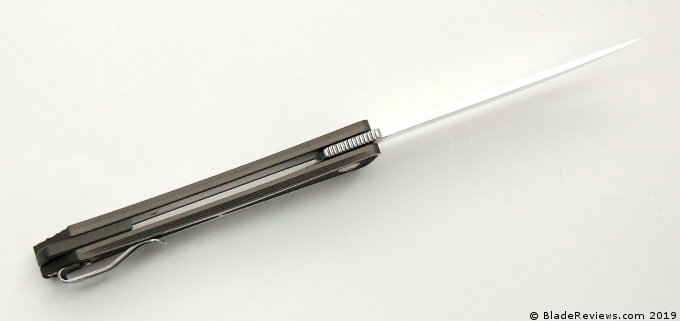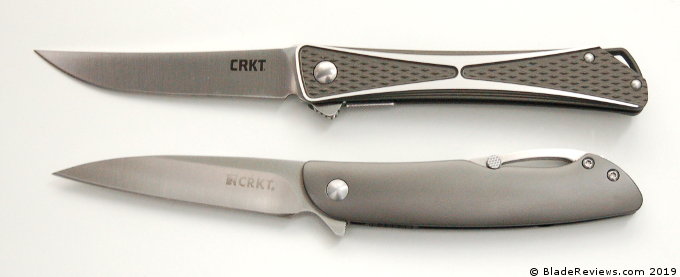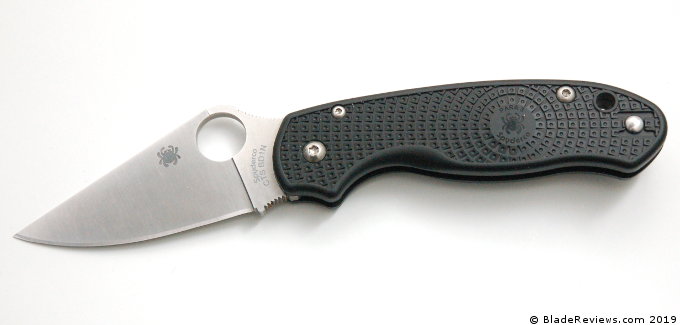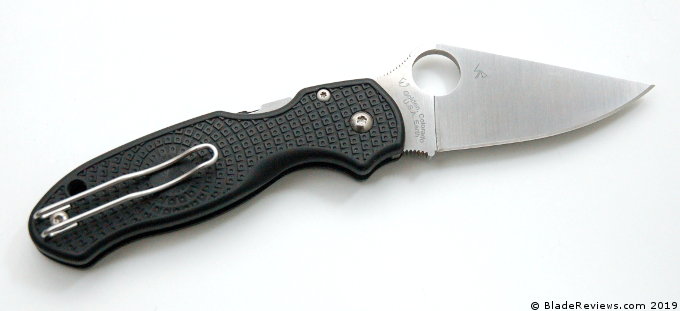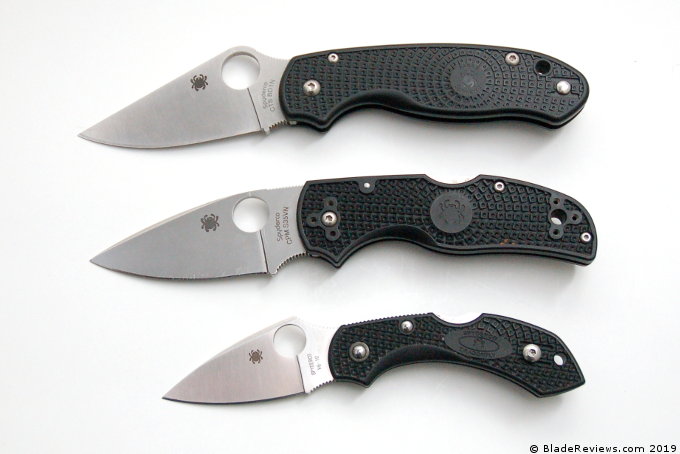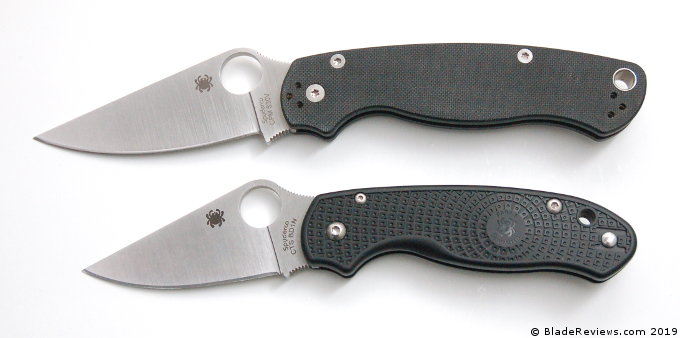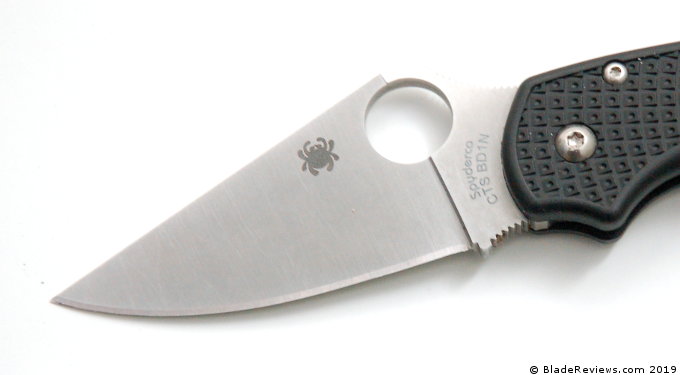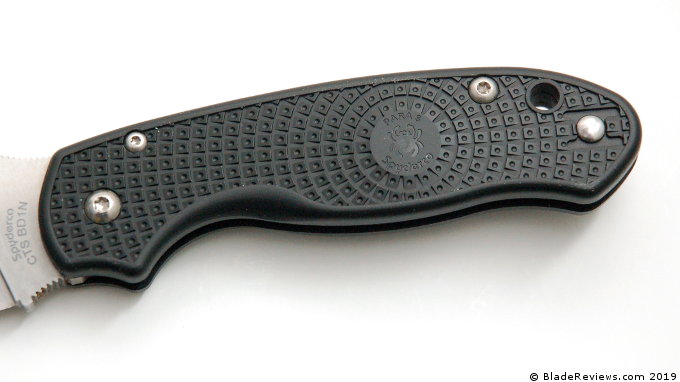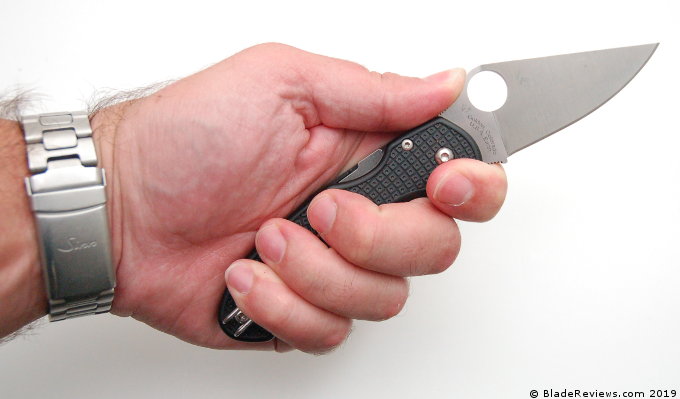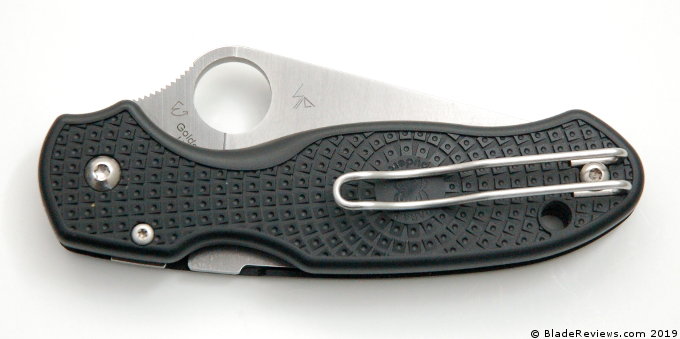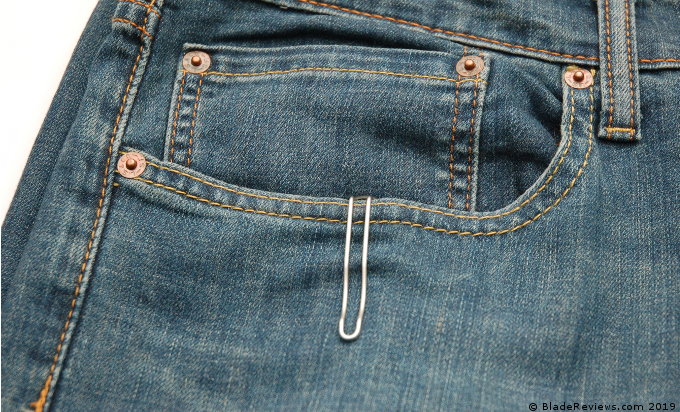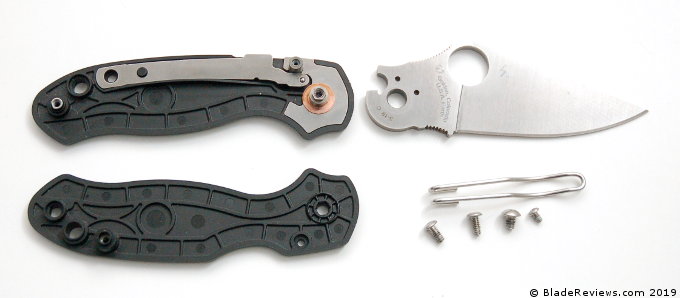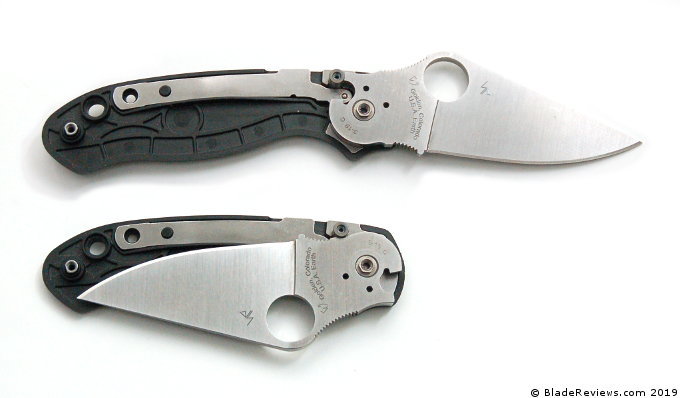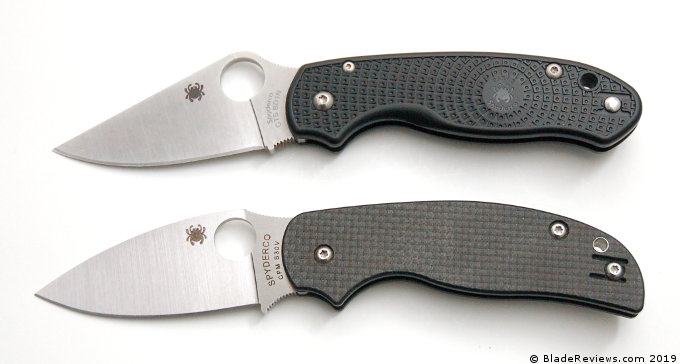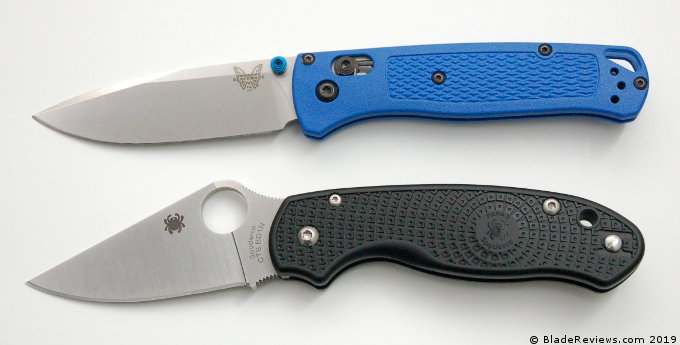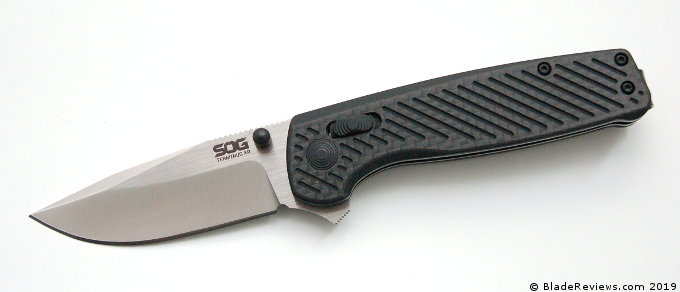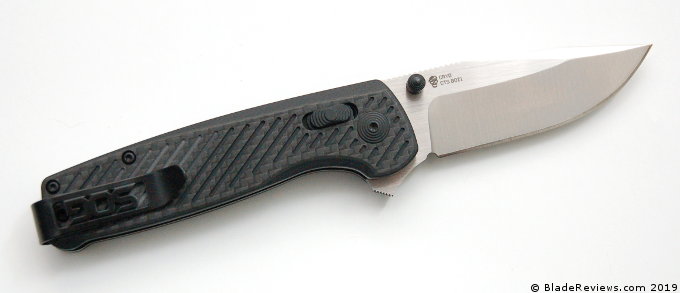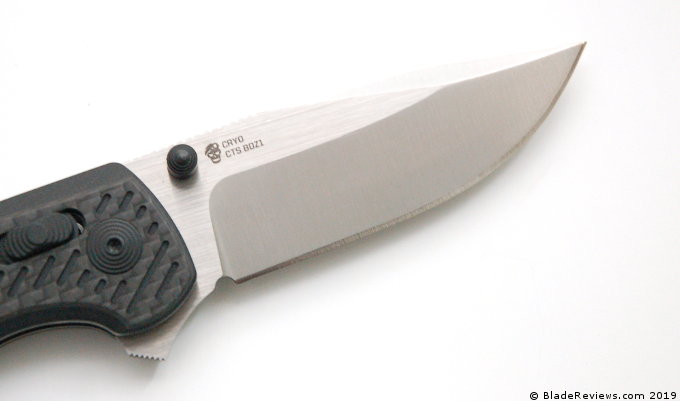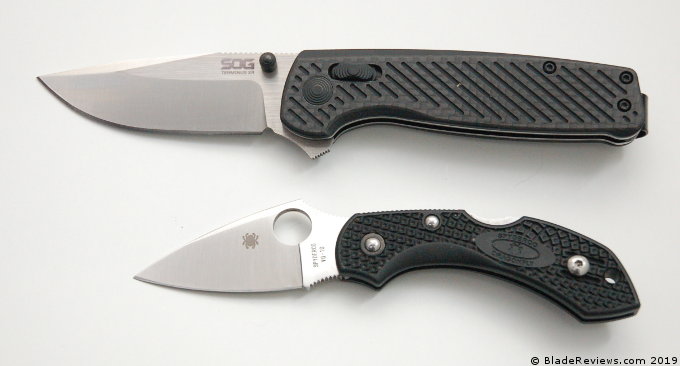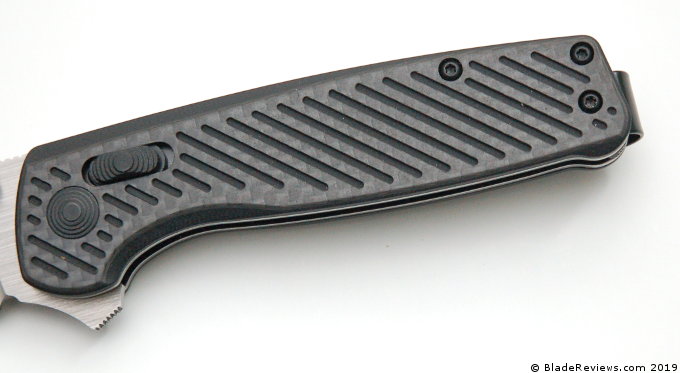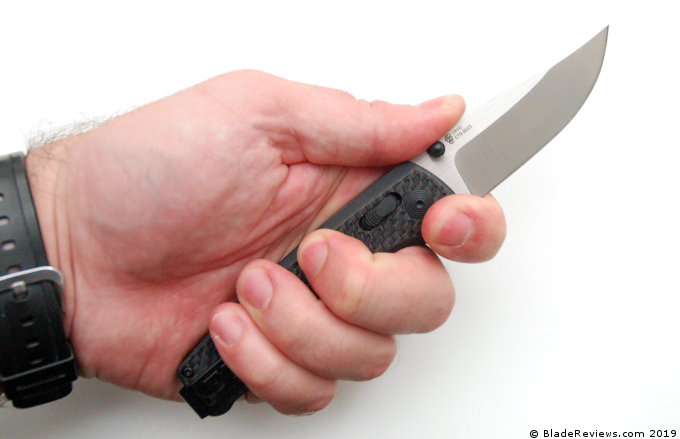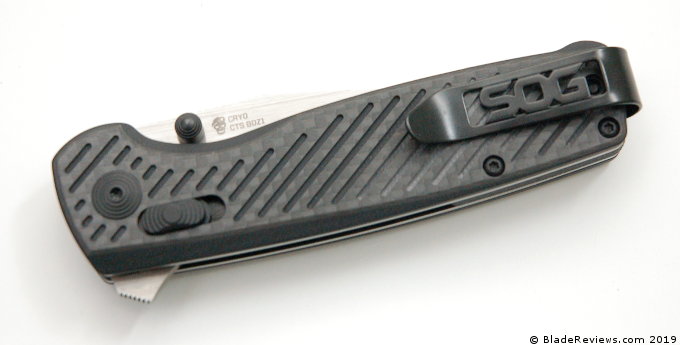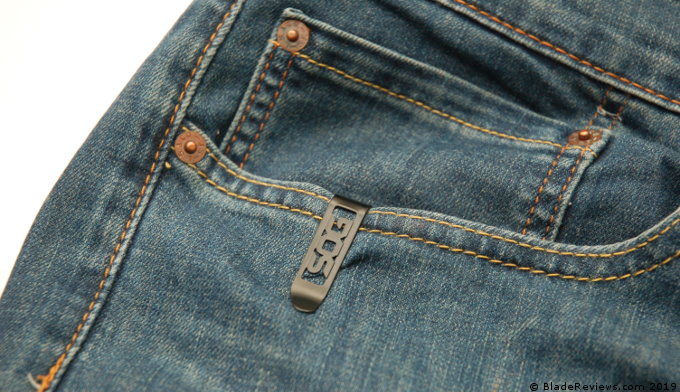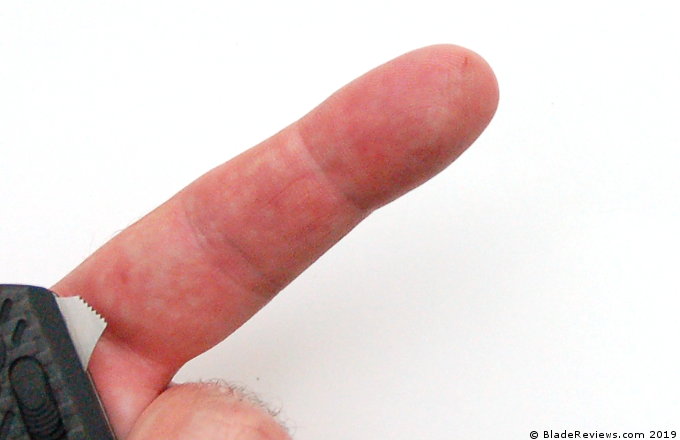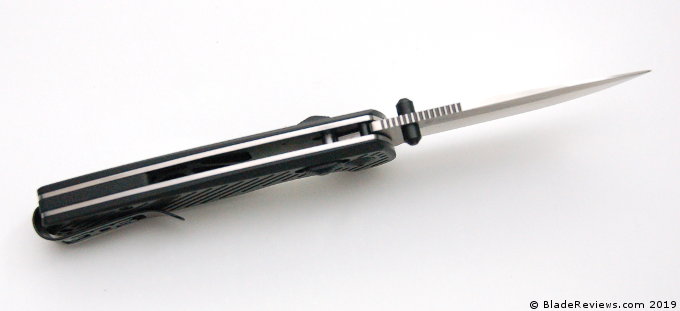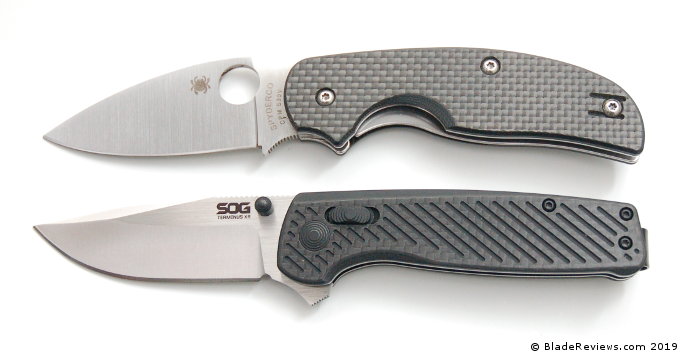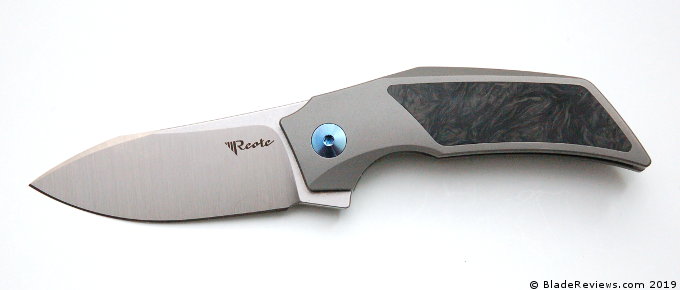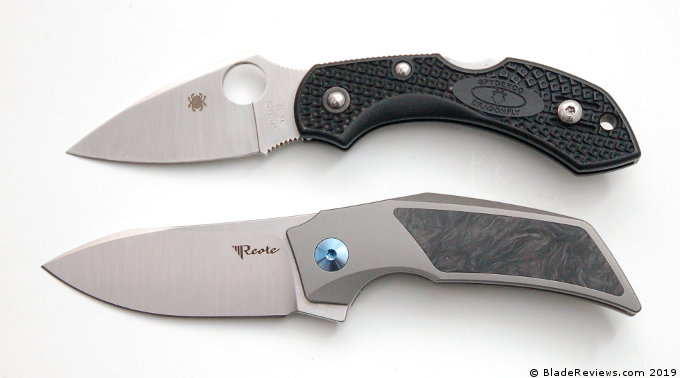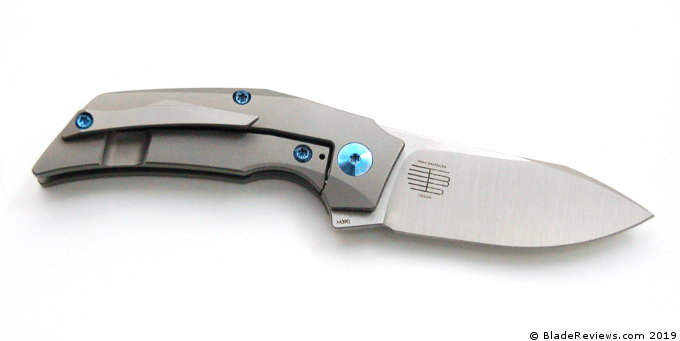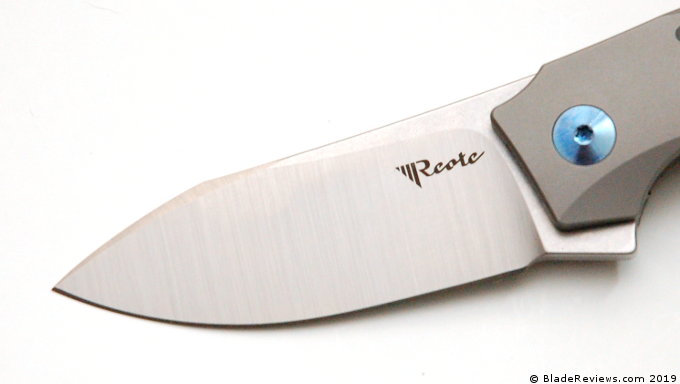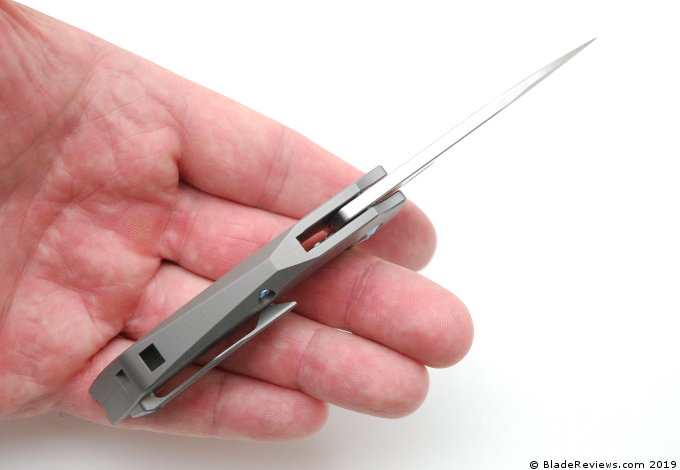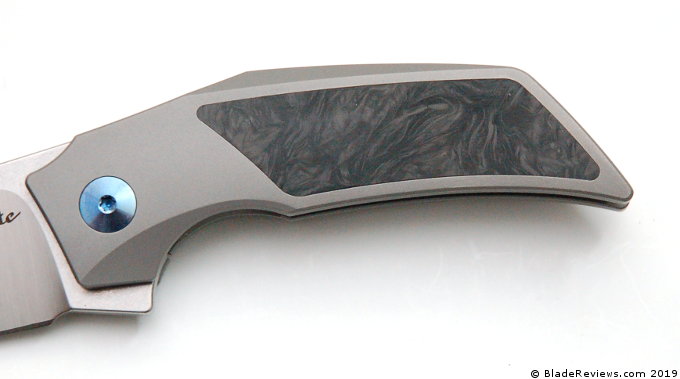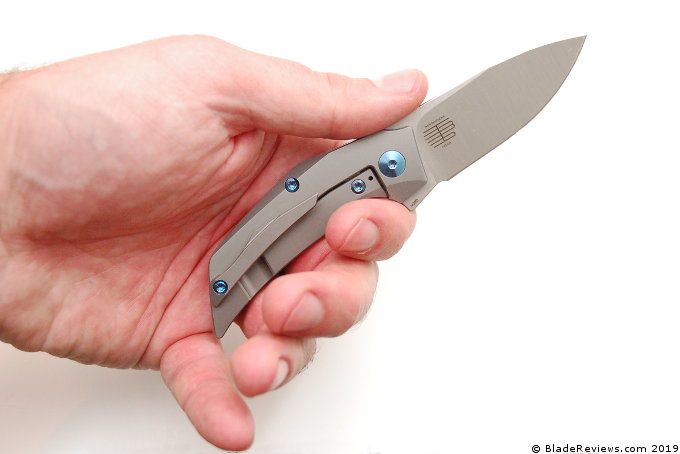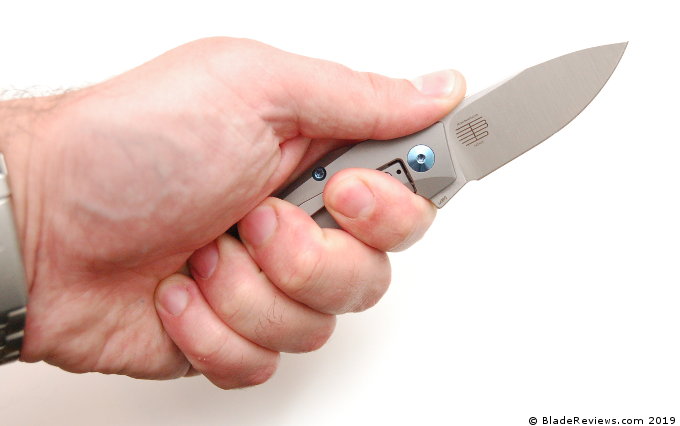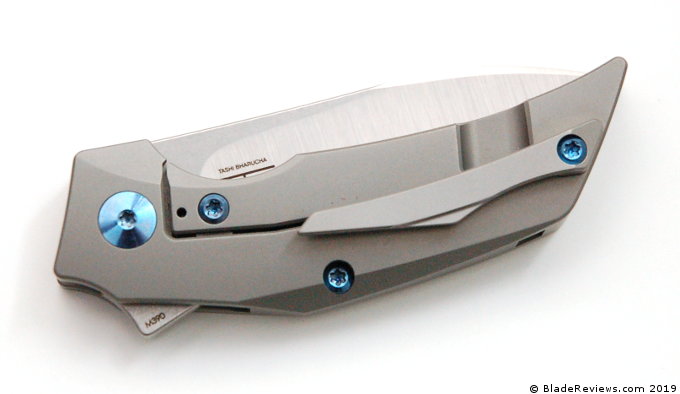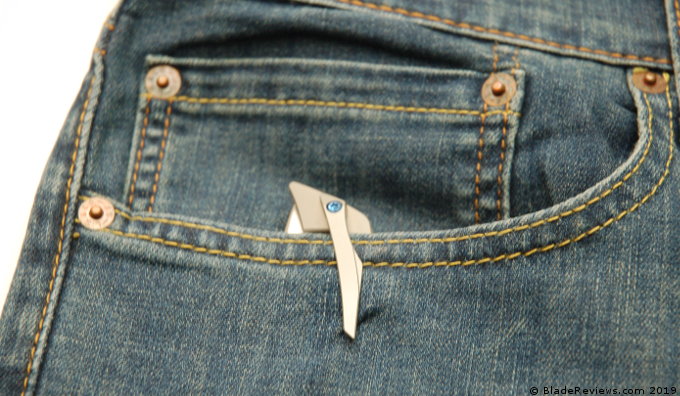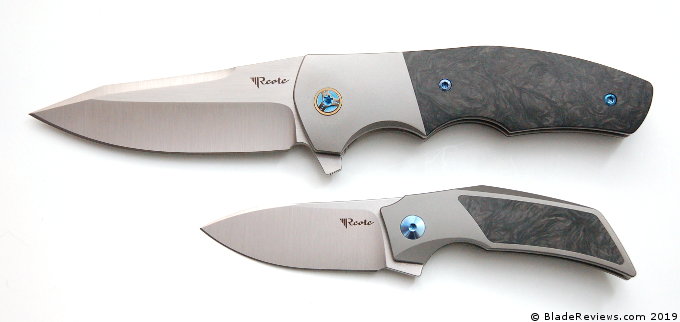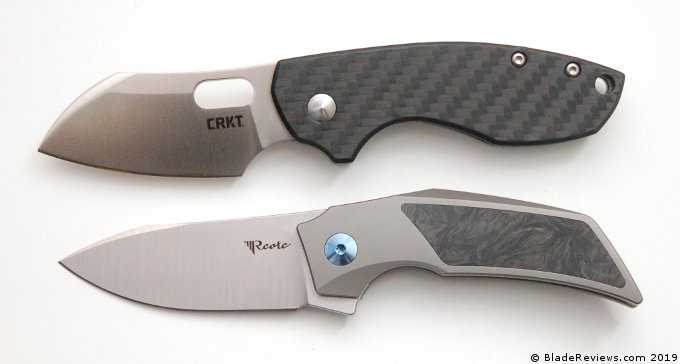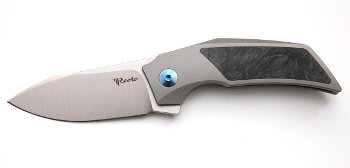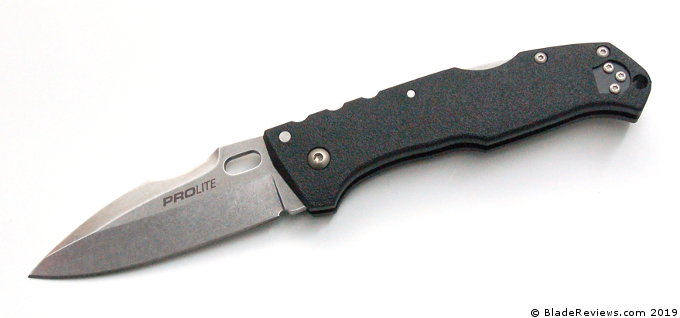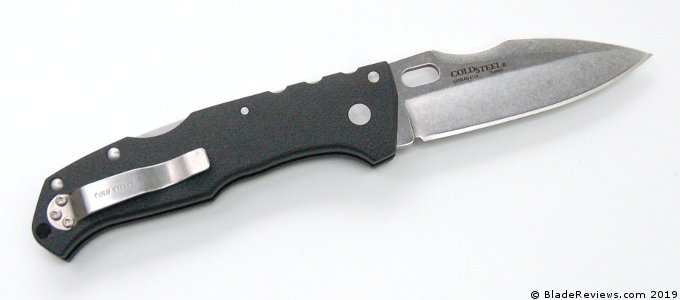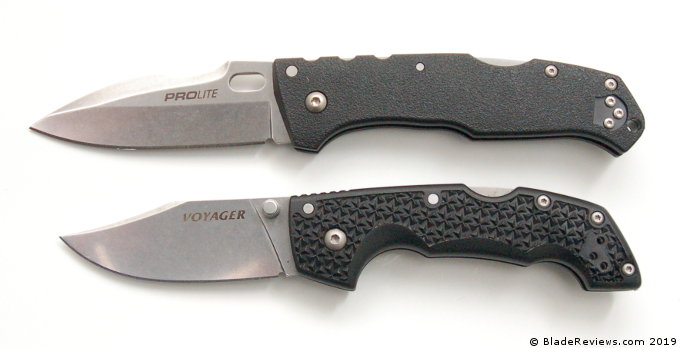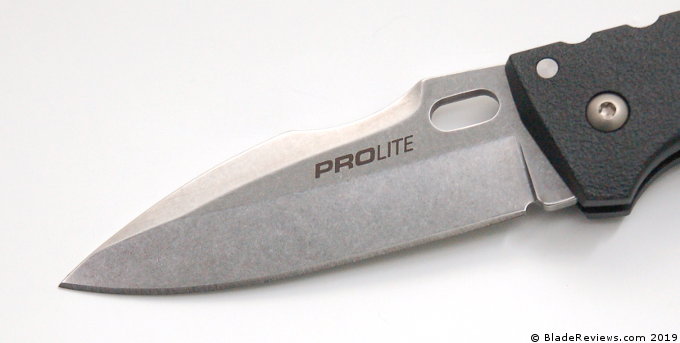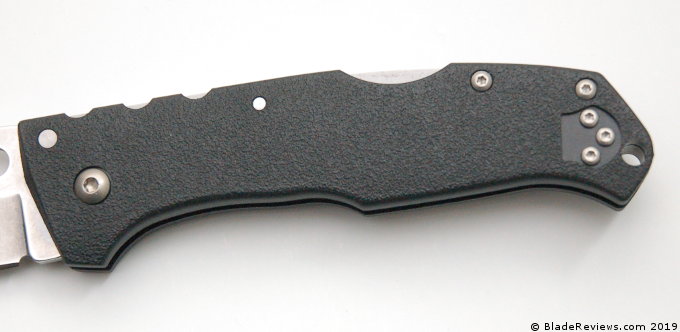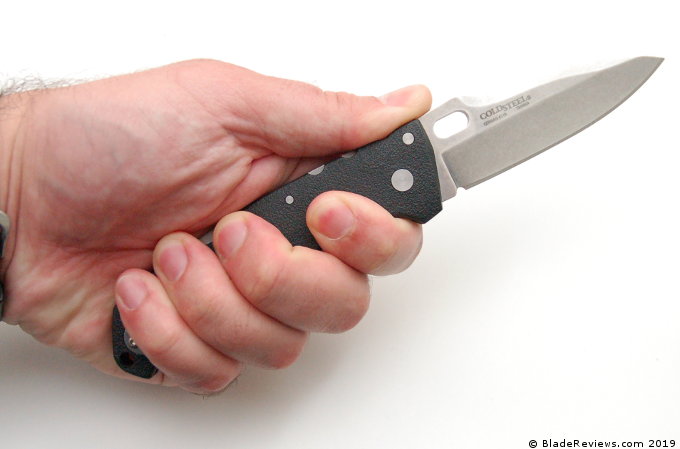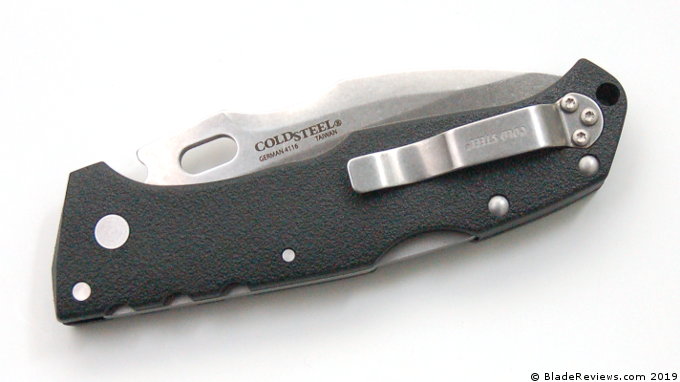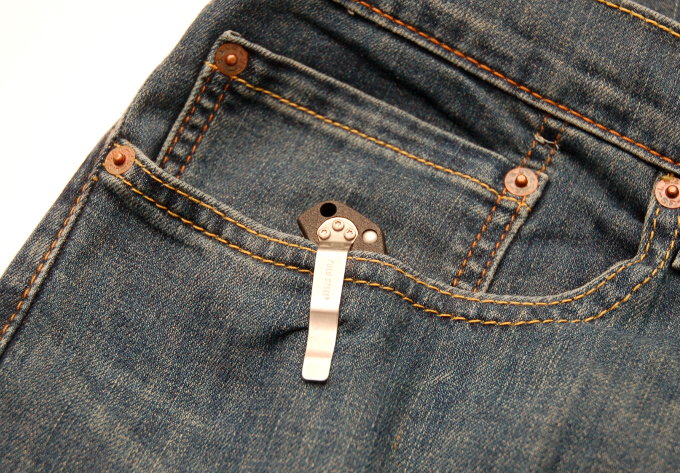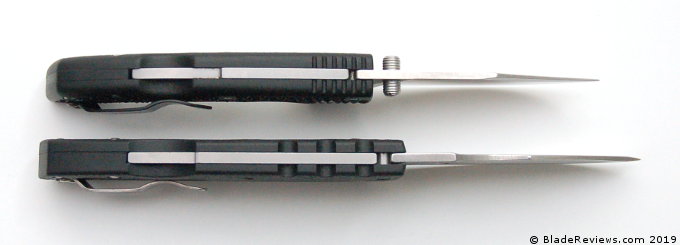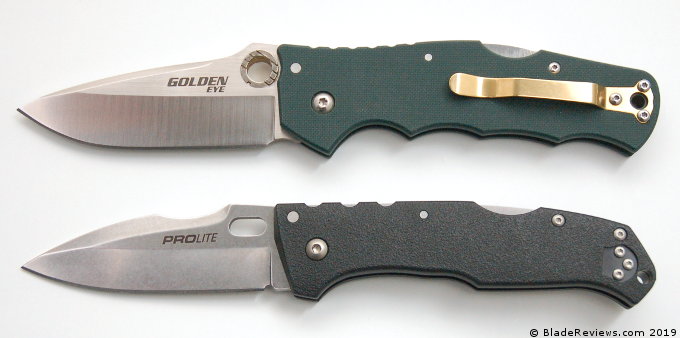I’ve got a couple Microtech knife reviews under my belt at this point, and as far as their automatics go I’ve reviewed the Halo VI and the Stitch. Something that is obviously missing from the picture is one of their dual action Out The Front (OTF) knives. The OTF autos are are the knives Microtech is best known for making. And of course for some reason I waited to pick one up.
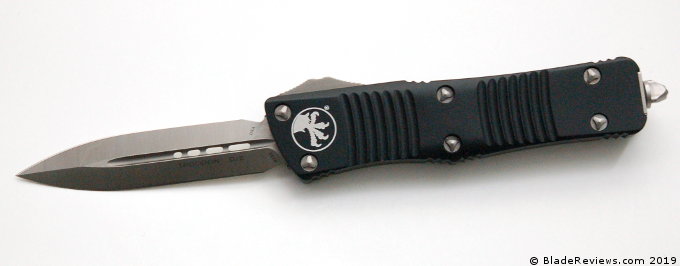 Buy the Microtech Troodon at BladeHQ
Buy the Microtech Troodon at BladeHQ
Oddly enough, it was when a buddy of mine in the real world told me he was picking up a couple Ultratechs to daily carry, it prompted me to think about a dual action OTF of my own.
I went for the Troodon because I thought it looked cool with its angled front. I went with a double edge spearpoint blade for added coolness, but as usual for Microtech you can configure this knife in a myriad of ways. Plus, the knife is named after a dinosaur. I’ll get an Ultratech soon.
General Dimensions and Blade Details
The Troodon has an overall length of 7.65″, a 3.00″ blade, weighs 3.00 ounces, and is made in the USA. This is a nice size knife for EDC, provided you are in a jurisdiction that allows you to carry an OTF knife. They do make these with a single edge, so it’s possible this could be a daily carry for some. Personally, this has been more of a collectible than a true daily carry for me.
Here is a picture next to a Spyderco Sage 5:
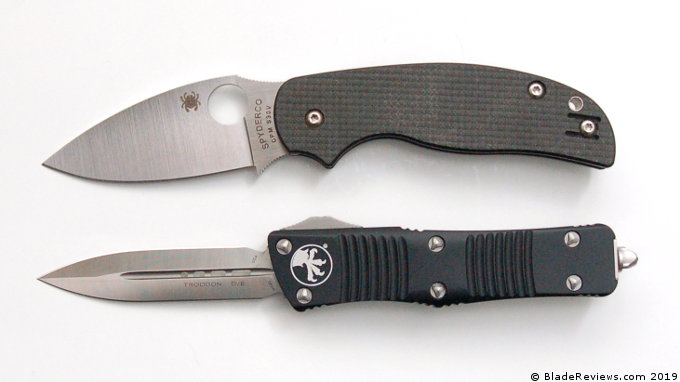
As you can see it’s a nice size for EDC. Provided you are in a jurisdiction that permits you to EDC it.
For those wanting something significantly bigger, Microtech offers the Combat Troodon with an overall length of 9.5″ and a 3.8″ blade. Weight comes in at 5.35 ounces.
As I’ve mentioned a couple times, this knife has a dual edged spear point blade. You can also get the knife in a drop point, tanto, or hellhound tanto. Additional options include partial serrations, full serrations, coated, or uncoated in a variety of finishes.
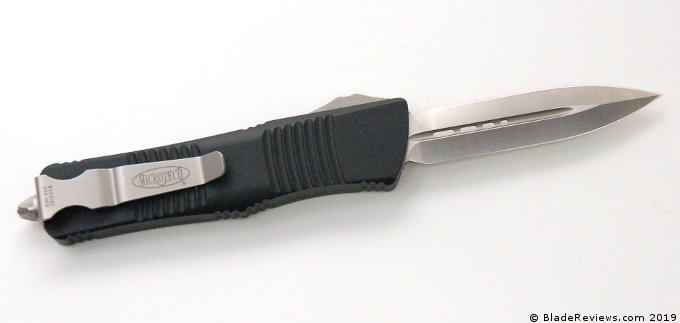
My knife features a satin finish. It has been beautifully ground. All grinds are crisp and uniform. The edges are also nice and even, not an easy job for a double edged knife. There is a deep fuller down the blade that has been further pocketed. It looks cool.
Blade steel is the tried and true M390. I have waxed semi-poetic about this steel for a long time. It’s one of my favorite high end steels, blending the qualities of good edge retention and easy sharpening. It also polishes nicely and exhibits good rust resistance.
I can’t say I’ve used this knife a whole lot. Besides it probably being illegal to carry outside my home, the double edged blade is kind of dangerous for my usual box cutting, apple coring shtick. I’ve used it lightly and treated it as more of a collectible. While I know some people will daily carry their Troodons, a lot will keep them as collectibles.
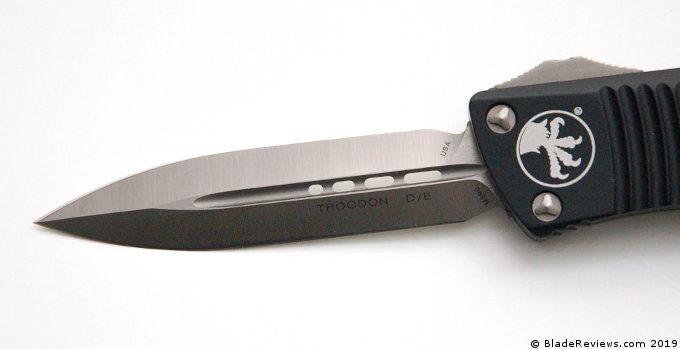
I will say the Troodon came extremely sharp out of the box. It cleanly cuts thin receipt paper. It will open a letter or a package without a problem. And I have to confess these dual action OTFs are actually very handy because you can use them easily with one hand. My Troodon was epic in the kitchen for opening up bags of produce. It also sliced some roma tomatoes easily, although I was careful to clean the blade after prior to retracting it back into the handle of the knife.
On the subject of sharpening, it’s interesting to review Microtech’s FAQs. They say improper sharpening voids their warranty. I’d be curious to learn what that entails. I’m sure gentle stropping or running the edge on a ceramic rod like a Sharpmaker will not void the warranty.
Handle, Ergonomics, and Pocket Clip
The Troodon features a hard anodized aluminum handle, fastened together with Microtech’s proprietary hardware. Usually, this is the part of the review where I’d take a moment to whine about the proprietary hardware, but this is a knife I have no desire to open up.
Fit and finish is excellent. All the parts line up perfectly, and everything has been finished to a high standard. The hard anodizing is good, but it’s not impervious to wear. My anodizing has worn slightly underneath the pocket clip, and my electrician friend’s Ultratech shows some significant battle scars after a couple months of heavy duty daily carry.
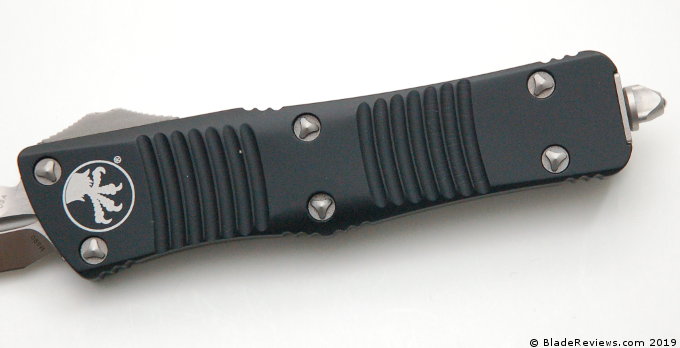
Capping things off is an aggressive glass breaker / “skull crusher” on the pommel.
The Troodon is comfortable in hand. There is a lot of traction on this handle thanks to deep scallops all over the handle. That, combined with the box handle shape, means that this is not a knife that will melt into your hand. But you can definitely get a good grip on it, which is essential for using the dual action button. More on that later.
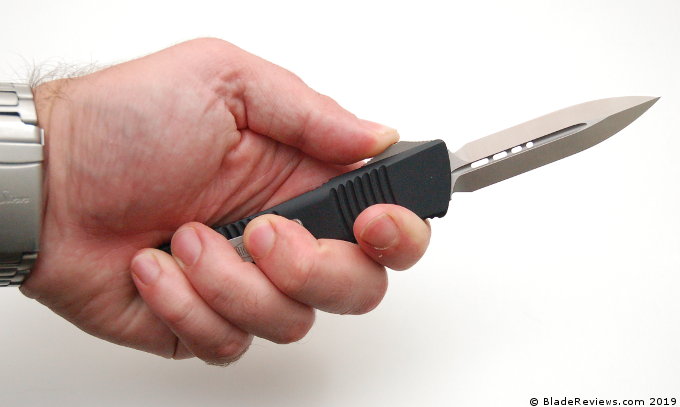
While the knife will never be as comfortable as an Emerson, the handle design serves its purpose and looks good doing it.
The pocket clip is a deep carry “double dip” clip, a la Chris Reeve Knives. I’ve always liked double dip clips as they help anchor the knife in your pocket. That, combined with the good spring retention and aggressive texture under the clip, means that this knife isn’t going anywhere. Comforting when you shell out almost $400 for a pocket knife.
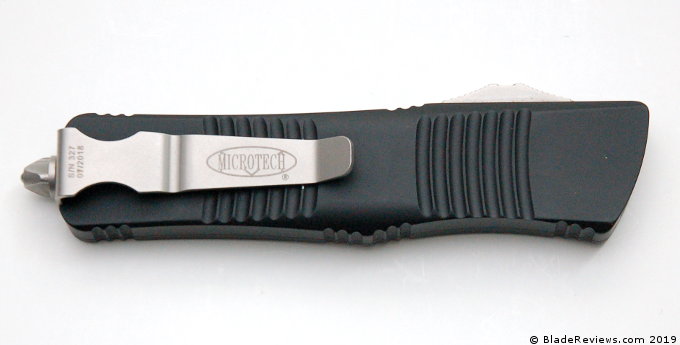
The clip is another precision machined part marrying form and function. It looks cool without being over-the-top, and is both serialized and production date stamped. It’s anchored in place with that impressively machined glass breaker pommel. The clip can be swapped for right or left side tip up carry, but you will need either a special tool or some patience to un-thread the pommel without marring its finish.
In practice the Troodon carries great. The pocket clip is secure and the knife is light. I’ve carried this knife around the house and quickly forgot the Troodon was in my pocket. I literally forgot I was carrying the knife, to the point where I ended up taking it on an hour long bike ride. Generally I don’t select $400 knives for bike rides, but the Troodon performed admirably, thanks in large part to that double dip clip.
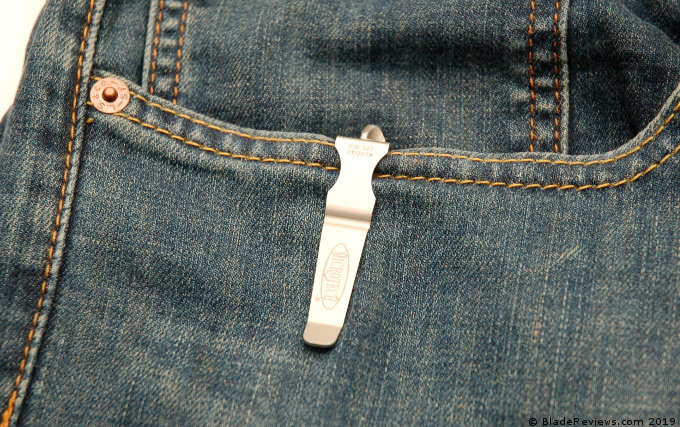
Deployment and Lockup
This section is why you buy a Troodon. It’s a dual action out the front automatic knife. That means the blade both opens and closes with the push of a button. It’s an “Out The Front” automatic because the blade shoots and retracts out the front of the knife. None of this should come as a surprise, but it’s worth mentioning to be thorough.
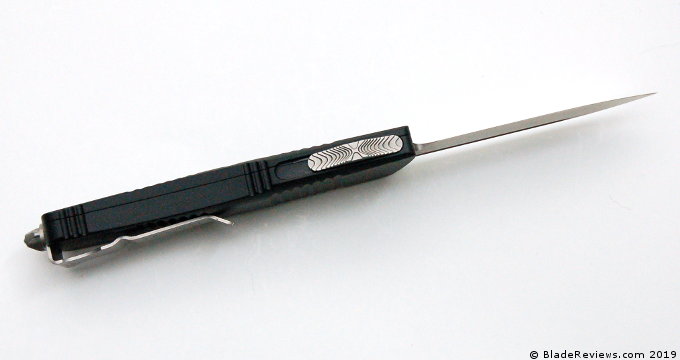
So how does it work? The button is stiff, and takes a good amount of pressure to actuate. That’s a good thing, as you don’t want the knife to accidentally open up in your pocket. Thanks to the significant force required to actuate the blade, I think it’s almost impossible that the blade would open up accidentally.
When you do apply enough force to trigger the blade it shoots out with a satisfying snap. It feels punchy, but its actually not enough force to be considered a “penetrateor”. This means it’s not designed to be shot into it’s target like a light saber. If you hold an index card an inch or two in front of the knife, it will not punch through the card, and it will instead derail the blade. You can then reset the blade by pulling it out manually. I consider this to be a feature, not a bug. As it stands a knife like this requires a certain level of respect. It’s not a toy and you need to be careful with it.
Here it is next to my Halo VI:
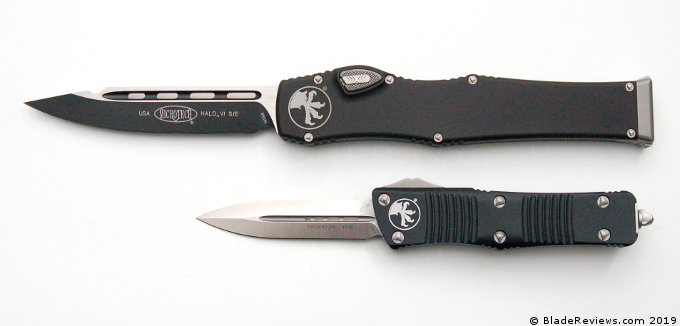
When the knife is open there is a little blade wiggle. Not a lot, maybe half millimeter. That’s the nature of most dual action knives, although, the Deadlock is a notable exception. The blade wiggle is to be expected with these production dual action OTFs. The knives will hold up fine under normal use, but you definitely don’t want to do any prying or chopping with a knife like this.
The blade retracts by pulling back on the button. It shoots into the handle with the same speed and sound. The entire process is novel and satisfying.
Microtech Troodon Review – Final Thoughts
Each Microtech I’ve bought has encouraged me to buy another. They are unique and memorable knives. They aren’t cheap, but they are beautifully made in the USA. The visual flair, attention to detail, and robust nature of their offerings elevates their offerings beyond gimmick.
The Troodon is no exception. These dual action OTF knives are Microtech’s bread and butter, and it’s easy to see why. The action is smooth, satisfying, and undeniably cool. While this knife isn’t a daily carry for me, plenty of folks like to carry these D/A OTFs. Part of the appeal is that you can easily open and close the knife with one hand. In that sense, this is actually a practical tool. But it’s Microtech’s ability to blend form and function that keep me coming back.
Recommended to those who are interested in the design, or a high end dual action OTF automatic. I don’t think you will be disappointed.
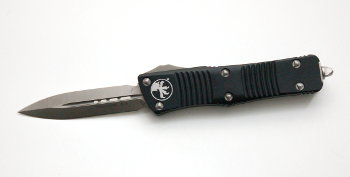
Microtech Troodon- From $374.00
From: BladeHQ
I recommend purchasing the Microtech Troodon at BladeHQ or Amazon. Thank you for reading.
